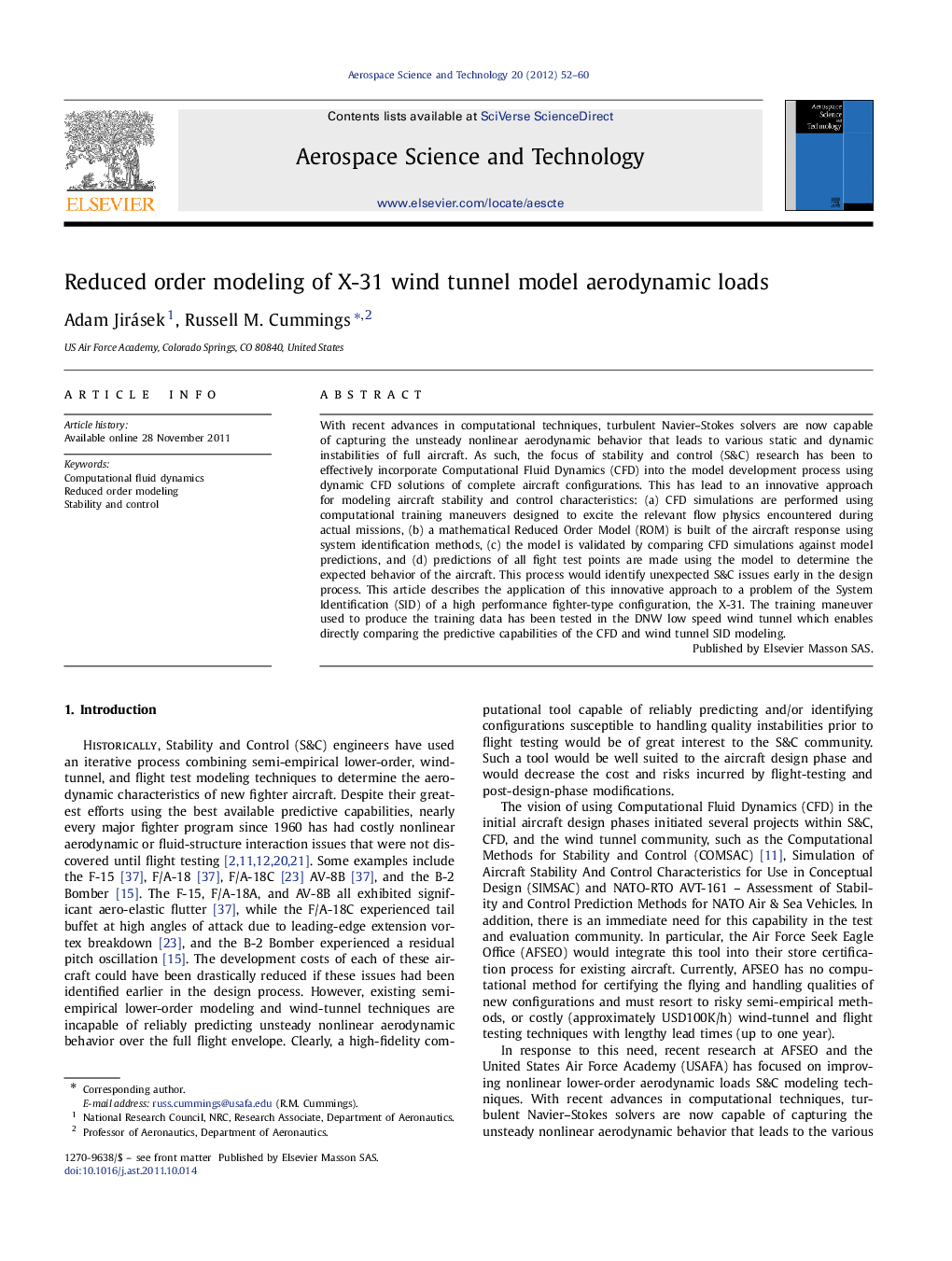| Article ID | Journal | Published Year | Pages | File Type |
|---|---|---|---|---|
| 1718433 | Aerospace Science and Technology | 2012 | 9 Pages |
With recent advances in computational techniques, turbulent Navier–Stokes solvers are now capable of capturing the unsteady nonlinear aerodynamic behavior that leads to various static and dynamic instabilities of full aircraft. As such, the focus of stability and control (S&C) research has been to effectively incorporate Computational Fluid Dynamics (CFD) into the model development process using dynamic CFD solutions of complete aircraft configurations. This has lead to an innovative approach for modeling aircraft stability and control characteristics: (a) CFD simulations are performed using computational training maneuvers designed to excite the relevant flow physics encountered during actual missions, (b) a mathematical Reduced Order Model (ROM) is built of the aircraft response using system identification methods, (c) the model is validated by comparing CFD simulations against model predictions, and (d) predictions of all fight test points are made using the model to determine the expected behavior of the aircraft. This process would identify unexpected S&C issues early in the design process. This article describes the application of this innovative approach to a problem of the System Identification (SID) of a high performance fighter-type configuration, the X-31. The training maneuver used to produce the training data has been tested in the DNW low speed wind tunnel which enables directly comparing the predictive capabilities of the CFD and wind tunnel SID modeling.
